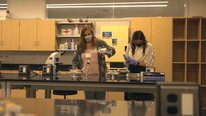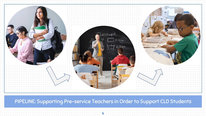- Kristin Rainville
- Associate Professor
- Preparing Teachers to Integrate Science, Technology, Engineering, and Math in Elementary Classrooms
- https://www.sacredheart.edu/academics/colleges--schools/college-of-education/scholarships--awards/noyce-scholarship-program/noyce-elementary-education-scholarship-program/
- Sacred Heart University
- MArk Beekey
- Professor and Chair
- Preparing Teachers to Integrate Science, Technology, Engineering, and Math in Elementary Classrooms
- https://www.sacredheart.edu/academics/colleges--schools/college-of-education/scholarships--awards/noyce-scholarship-program/noyce-elementary-education-scholarship-program/
- Sacred Heart University
- Andrew Lazowski
- Associate Professor
- Preparing Teachers to Integrate Science, Technology, Engineering, and Math in Elementary Classrooms
- https://www.sacredheart.edu/academics/colleges--schools/college-of-education/scholarships--awards/noyce-scholarship-program/noyce-elementary-education-scholarship-program/
- Sacred Heart University
- Bonnie Maur
- STEAM Director, College of Education
- Preparing Teachers to Integrate Science, Technology, Engineering, and Math in Elementary Classrooms
- https://www.sacredheart.edu/academics/colleges--schools/college-of-education/scholarships--awards/noyce-scholarship-program/noyce-elementary-education-scholarship-program/
- Sacred Heart University
Public Discussion
Continue the discussion of this presentation on the Multiplex. Go to Multiplex










Anne Stevenson
Thank you for sharing your program! How can HS students learn more about your program?
Bonnie Maur
STEAM Director, College of Education
Hello Anne! In our latest Noyce grant we have added a pathway for students to move from area high schools directly to SHU or through a nearby community college and then join us as a transfer student in their junior year (our education is a 5 year program whereby students graduate with their MAT). The Noyce program is part of their junior and senior years and then their Masters year. We have recently decided to recruit by holding events at high schools and introduce Noyce there. We have also started to recruit during our admissions events as well as our transfer admissions event. Please feel free to contact me at maurb@sacredheart.edu if you'd like to reach out.
Megan Davis
Anne Stevenson
Thank you Bonnie! This is so great to know about!
Christine Royce
Professor
Hi,
The students who spoke about the program and their experiences truly seem to have had positive and influential opportunities - so congratulations. I noticed in the above post and part of the narrative from the video, the students have three years in the formal program -and may have come from a community college or your own university. Have you developed working relationships with local community colleges and if so how has that contributed to a seamless path for all of the students?
Catherine Horn
Moores Professor and Chair
Thanks for introducing us to your program. I have a few wonderings after watching the video. First, how do you identify master mentors and how do you connect that process with your larger interest in preparing culturally responsive STEM teachers? I also would love to hear one or two examples of the ways in which culturally responsive pedagogy is infused into the curricular and residency experiences of your participants.
Appreciate your work.
Cathy
Kristin Rainville
Associate Professor
Hi Cathy,
This is a really important question. We invite mentor teachers to engage in professional learning experiences like books discussions- to read and talk about ways that they can infuse, or notice and name practices they already use as culturally responsive or sustaining practices. For example, if we are reading Emdin’s work on reality pedagogy (which the Scholars read) we would also invite mentor teachers to explore it as well. We would talk about ways we are using asset perspectives when we learn about our students, their families, their communities, and the ways in which we can empower learners to lead in p-12 classrooms. Scholars identified ways in which they saw culturally responsive pedagogy in action in the classrooms they worked and they planned lessons that aligned with what they were reading in Emdin’s book. The Scholars this year talked a lot about the bottom line building trusting relationships with students and communities and knowing and infusing their student’s lives outside school within the classroom to connect and deepen learning as well as empowering students as leaders.
One of the challenges that Scholars noticed had to do with funding and access to equipment, materials, etc. that led to inequities across schools and districts they visited. In response to this, we have designed grant writing into one of the courses to empower students with that skill so that there are more equitable (and invited mentor teachers into that learning as well).
Like many of you, we are continually learning and are deeply committed to creating more equitable experiences for all children- so as we learn more about culturally responsive or anti-racist teaching in STEM we are connecting with educators, schools, and communities into conversations towards change.
Catherine Horn
Moores Professor and Chair
Really appreciate this detail and share the reflection that we are continually learning. You're engaged in such important work!
cathy
Valerie Fitton-Kane
Sounds like a great program for getting more great teachers into STEM! I represent Challenger Center, an education organization that develops engaging, experiential STEM programs for K-12 students. Over our 35 year history, we have had thousands of teachers engage their students in our programs, and many have learnt from the ways we integrate STEM with 21st Century skill development and career exploration. We have a program developed under our ITEST grant called Classroom Adventures for 3rd-5th grade students. These experiences are designed to be run in any school classroom by a teacher after a brief online training. Classroom Adventures could be a great resource for young STEM teachers, not only for engaging their students in NGSS-aligned STEM activities, but also for learning techniques for deepenening STEM engagement that they can apply throughout their teaching career. Check out our STEM for All video and more information about Classroom Adventures at https://www.challenger.org/what-we-do/adventures/.
Bonnie Maur
STEAM Director, College of Education
Thanks! I will check out your video and look to reach out to you in order to see how we might be able to collaborate! Thanks for checking in!
Jill Berg
Leadership Coach, School Improvement Consultant & Author
This is a great example of the power and importance of mentoring. I appreciated hearing the voices of program participants in this video.
Perhaps you could share a more thorough explanation or examples of what you're considering to be "culturally responsive STEM pedagogies."
Kevin Garner
Thank you for sharing your program! What is the process that is used to identify master teachers that participate in your program?
Kristin Rainville
Associate Professor
Hello. (just copying Bonnie's response so it gets sent directly to you, Kevin- thanks for your question!) We first identify schools within the districts who have a reputation of being strong in STEM areas and/or have teachers within their school who are interested in working with our students to strengthen their skills in the classroom. We then meet with the teachers who have been recommended and essentially "interview" them and also meet with a building coordinator who can also recommend them. We thereafter choose the appropriate teachers to work with our students whom we already know so that they can be well matched.
Bonnie Maur
STEAM Director, College of Education
Hello. We first identify schools within the districts who have a reputation of being strong in STEM areas and/or have teachers within their school who are interested in working with our students to strengthen their skills in the classroom. We then meet with the teachers who have been recommended and essentially "interview" them and also meet with a building coordinator who can also recommend them. We thereafter choose the appropriate teachers to work with our students whom we already know so that they can be well matched.
Lauren Goff
This project is so interesting. Can you expand upon what the process is like for identifying participants for your program?
Kristin Rainville
Associate Professor
Thank you, Laura!
Our Noyce Scholars are undergraduate STEM majors. Many of them come into SHU wanting to become elementary teachers and have strong STEM identities. Although we host meetings for all students who may be interested in becoming Noyce Scholars, we also work closely with the professors of the STEM courses and as they see students who have a growth mindset, are actively engaged in class and with the professor, they follow up with the candidate. We also work closely with the local community college to encourage transfer students to apply. Our team meets with candidates (and often their family) to guide them through the application process, the commitment they are signing on for and to help them envision what being a Noyce Scholar means.
In addition, our program is a 5-year program combining their Bachelors of Science with a Masters of Arts in Teaching. They begin taking education courses their junior year. They also have summer experiences in STEM education prior to their education courses and placement in schools with their mentor teachers. The experiences in school combined with support that the Scholars get from their mentors is tremendous.
Bonnie Maur
STEAM Director, College of Education
Hello Lauren, Thanks Kristin for weighing in here. I would be happy to expand upon this for you. Please feel free to contact me at maurb@sacredheart.edu for further information.
Cassandra Bell
Your abstract talks about including future elementary teachers in the program. I am interested to hear more about that as we too have a Noyce Scholar program but only have future middle school and high school STEM teachers involved at this point. I would love to find a way to include future elementary teachers also as this is a large population at our University. Thanks!
Kristin Rainville
Associate Professor
Hi Cassandra. Yes, we have a Noyce Scholars program focused on preparing elementary STEM teachers. We saw a major gap in STEM prepared teachers at the elementary level and in response designed a STEM major for undergraduates to build content knowledge. Feel free to reach out to Bonnie or I to talk about ways that we designed and launched this exciting initiative at SHU!
Bonnie Maur
STEAM Director, College of Education
Hi Cassandra, Yes we were actually one of the first elementary programs to do this but have had a couple of middle and high school programs. I am happy to speak to you further about this at maurb@sacredheart.edu